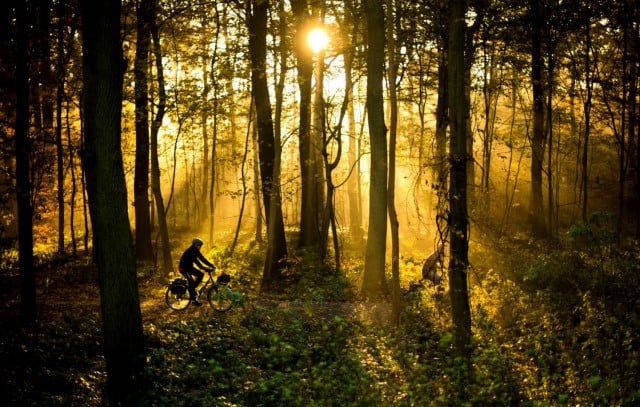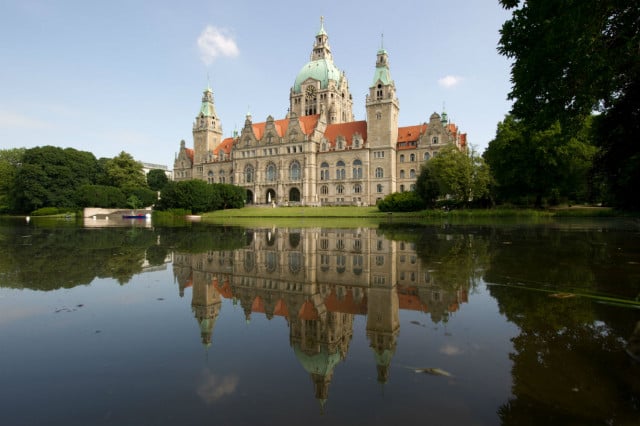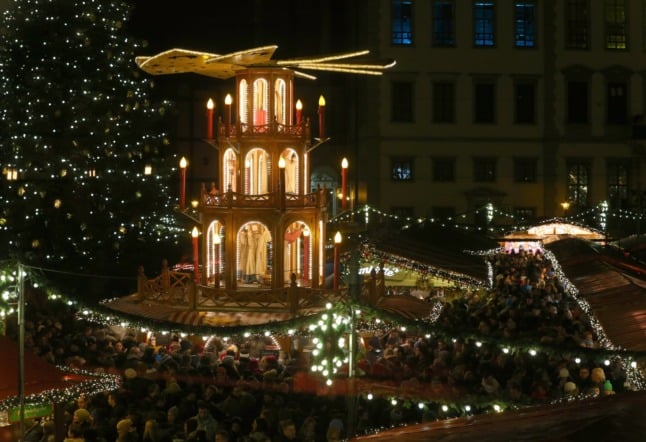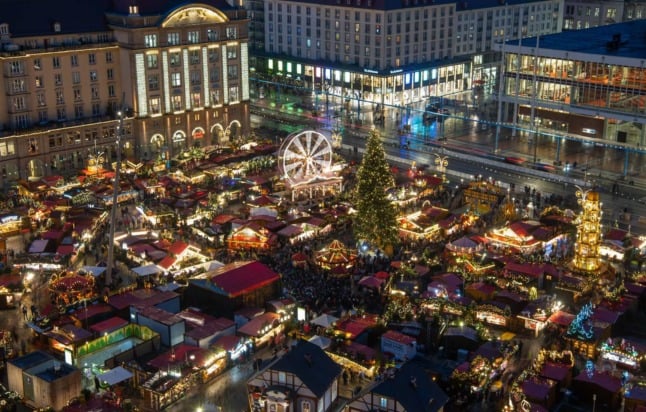For a city whose Royal House ruled Britain for 123 years, has the largest urban forest in Europe, as well as the oldest flea market, Hanover is often overlooked by tourists and locals alike. Here is why you should give the city a chance, or ten.
 Photo: DPA
Photo: DPA
The largest urban forest in Europe, Hanover’s Eilenriede Forest is in walking distance from the city centre. Covering an area almost twice the size of New York's Central Park, it’s the perfect place for a scenic bike ride, forest bathing, or a wonderful tree-shaded walk.
Whether you walk it or ride it, the Red Line Thread – a painted line 4200 metres long around the city, leads you to almost 40 of Hanover’s most interesting attractions. The Thread is accompanied by a small guide book, which describes each stop along the way, like the oldest family house in Hanover on Burgstrasse. You can purchase the guide online, or in person at the Hanover Tourist Information Centre. Alternatively, for a more formal tour, Hanover boasts its own hop-on hop-off bus tour.
Sometimes referred to as the Neuschwanstein of the north, Marienburg Castle, about 20km south of Hanover makes a memorable day trip. King George V of Hanover had the castle built for his wife Queen Marie, and today it is still considered an incredible example of neo-Gothic style.
Viewings inside the castle are only possible with a guided tour in which you’ll be able to see the almost perfectly preserved interiors, and learn interesting facts about the family and castle’s history. Marienburg Castle remains privately owned by the Royal House of Hanover which ruled Britain for 123 years from 1714 to 1837.
There’s nothing that stands out more than a building missing a roof. Hanover’s Aegidienkirche, or Aegidien Church, is an open-air remnant of the Second World War that now acts as a memorial site. An air raid in 1943 destroyed everything except the walls and parts of the church tower. Standing inside the main hall and looking up at the open sky makes for a unique and eerie experience.
This quirky museum, the first in Europe dedicated to kitchens, also houses a cafe’ and cooking school. It features over 30 real kitchen exhibits from different cultures and eras starting from the Middle Ages. Visits to the museum are only possible with pre-booked guided tours, but are well worth it for food and history lovers. Either at the end of your tour or before, make sure to indulge in traditional German cake and coffee at the Museum’s Schloss Cafe.
On Saturdays along the banks of the Leine River, you’ll find Germany’s oldest flea market in full swing. Stalls lining both sides of the river sell vintage bags and records, quirky kitsch, antiques, jewellery, bric-a-brac and more. While you’re there, don’t miss the three Nanas sculptures – one of Hanover’s most colourful and recognizable landmarks by the artist Niki de Saint Phalle.
Schützenfests, or marksmen’s festivals, are a centuries old regional tradition held all over Germany, but Hanover’s is the largest in the world. It was founded by Duke Erich I in 1529, and this year marks its 490th anniversary. This huge carnival which always includes a marksmen parade, is held annually every summer over ten days and nights.
The Royal Gardens of Herrenhausen
The Royal Gardens of Herrenhausen is Hanover’s biggest attraction. It was commissioned by Electress Sophia of Palatinate who oversaw the development of the garden from 1679 until 1714, the year of her death. Made up of the Grosser Garten, the Berggarten and the Georgengarten, the gardens have been virtually unchanged since their creation. Today they’re considered some of the most important Baroque gardens in Europe, and in 2015 were given the European Garden Award.
 Photo: DPA
Photo: DPA
Built at the beginning of the 20th century, Hanover’s New Town Hall is a striking sight from the outside. Inside, the sights continue with a curved lift that tilts at a 17-degree angle for 43 metres to take you to a viewing platform of the city. The clear windows inside the lift make it a very interesting ride. Back inside the main building, there are four models of Hanover that show the city’s development from the 17th century until today. The post-war model from 1945 is particularly interesting as it highlights the incredible devastation to the city after the bombing raids of World War II.
The Maschsee, a lake, near the New Town Hall, is one of the city’s most popular spots for jogging, water sports, bike riding or a leisurely stroll. Built between 1934 to 1936, this artificial lake is also home to the Maschseefest. This unique annual festival sees the waterfront transformed into a thriving entertainment area for almost three weeks every summer. In 2018, the festival saw almost 2.5 million visitors attend over 19 days.





 Please whitelist us to continue reading.
Please whitelist us to continue reading.
Member comments